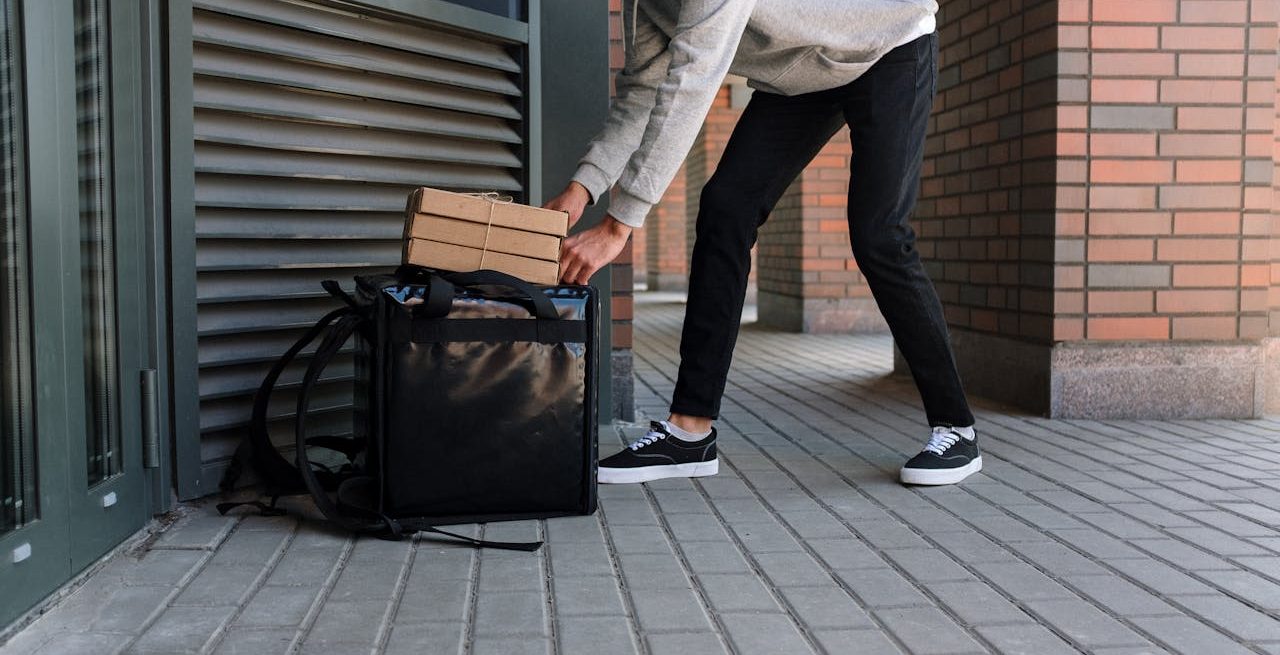Delivering on Delivery: An Implementation Guide
5 Min Read By Vitalii Makhov
Online food delivery thrives as phones become one-stop shops for ordering and tracking meals. This convenience has made the online food delivery market massive, with global revenues of over $1 trillion in 2023 alone.
As the huge market keeps growing, expected to hit $1.8 trillion by 2028, restaurants face a big decision. They must choose whether to use third-party online ordering platforms or handle delivery in-house.
This guide helps restaurants pick the right way to deliver. Plus, it explores how to efficiently implement ordering platforms and optimise delivery operations.
In-House vs. Third-Party Delivery
In the past, customers had to call or fill out forms on the restaurant's website to get food to their doorsteps. However, things have changed with the rise of delivery apps for restaurants.
These apps have made it much easier for people to order food for delivery. Customers can now browse menus, place and track their orders, all from their phones.
For restaurants, there are pros and cons to using third-party solutions offering different types of delivery services. For example, online ordering platforms help smaller restaurants reach more customers. Specifically, you are getting exposed to a pool of people who might not have known you existed.
However, the downside is that the delivery apps charge restaurants steep fees. Also, the blame for unsatisfactory delivery experiences can fall on you.
An alternative for restaurants is to create their own online delivery platforms. This approach allows for more control over the customer's experience. Plus, restaurants retain 100 percent of the order revenue.
Handling deliveries yourself can be tricky. You will need time and resources to set up a smooth system. This scenario also implies hiring couriers and handling logistics.
So, which option should a restaurant choose? It really depends on the specific needs and circumstances of the business. For example, your restaurant offers highly customizable meals such as build-your-own salads. In this case, a custom online ordering platform may be a better choice. As a restaurant owner, you can tailor your solution to accommodate complex menu options.
On the other hand, if a restaurant gets a few delivery orders, it may be more cost-effective to use a delivery app. It can be especially true for smaller restaurants or those just starting out. The reason is the insufficient return on investment from developing a custom solution.
So, what are the key considerations when implementing online ordering platforms? Let's explore factors involved in both custom and third-party systems.
Must-Have Features for Modern Platforms
Modern online ordering platforms have transformed how users order food. The technology simplifies the entire process, from selecting menu items to making payments.
No matter what online ordering platforms you prefer, the chosen one should have the following features:
-
An intuitive and user-friendly interface that streamlines the food ordering process
-
Subtle yet personalized upselling and cross-selling capabilities to boost average order values
-
Seamless integration with front-of-house systems like POS and delivery service solutions
-
Access to customer data and analytics to guide future marketing efforts
These features will make online ordering a breeze for both customers and restaurants. Now, let's explore your choices in deep: building a custom app or using popular delivery platforms.
When Developing Custom Ordering Software
Customers can now place orders directly through a restaurant's website or application. In fact, apps for restaurants have become indispensable these days. More users prefer the convenience of online ordering. For this reason, a branded mobile app can provide a competitive edge. However, developing a user-friendly solution is a lot of work. Moreover, investment is required to add all the necessary functions. Let's review the main features food delivery apps should include:
User Interface
-
Order and Shopping cart: The app should provide an easy-to-navigate menu and shopping cart with checkout. Filters can help users find what they're looking for, along with product descriptions and prices.
-
Payment choices: Mobile ordering and payment options facilitate contact-free delivery. The methods you can consider are PayPal, credit/debit cards, Stripe, Apple Pay, and Google Pay.
-
Location and tracking: After placing an order, users should be able to track the courier's location in real time.
Restaurant Management Panel
-
Menu management: Restaurant owners and employees should have the option to add, remove, and edit menu items.
-
Order management: New orders should be easily accessible for acceptance, decline, or modification. Order status should be changeable. For a significant number of orders, it is better to process them on one platform. This platform could integrate with the restaurant's existing POS system.
Restaurant Administration
-
Permission management: This component is crucial for role-specific access. It allows chefs, waitstaff, and managers to carry out their designated tasks within the system.
-
Payment integration: Payment methods are stored and managed for security and accuracy.
-
Assigning orders: Administrators should be able to assign or reassign orders to delivery personnel.
Driver Interface
-
Profile creation and verification: Couriers should be able to create a profile and add personal information.
-
Maps: Maps should be integrated to help couriers find the easiest routes to customers.
-
Order information: Couriers should know the delivery address, order contents, and customer phone number.
What to Pay Attention to When Choosing Third-Party Platforms
When selecting external delivery platforms, restaurants should focus on these key considerations:
-
User-Friendly App: Opt for a mobile app ordering experience that's user-friendly, with clear menus and secure payment options. Look for features such as real-time order tracking and easy search functions to enhance the customer experience.
-
Fair Commission Rates: Look for delivery services with reasonable commission rates. This aspect is essential for maintaining profitability while offering competitive prices.
-
Seamless POS Integration: Ensure easy integration with the restaurant's POS system. POS integration automates order processing and provides real-time data for better decision-making.
-
Customer Data Access: Seek partners that provide insights into customer preferences to tailor offerings. Access to customer data allows restaurants to personalise experiences and stay ahead of market trends.
By addressing these factors, restaurants can make informed decisions. Beyond that, let's consider other important steps to start delivery services.
Making Your Restaurant Delivery a Success
Successful restaurant delivery goes beyond just the ordering software. You have to ensure customers are happy, planning good delivery routes, and keeping food quality high. From planning routes to checking food, attention to detail is crucial for a smooth delivery experience.
Opt for a Travel-Friendly Menu and Branded Packaging
For successful food delivery, choose menu items that travel well and taste great when they arrive. Branded packaging can further improve the customer experience. For example, you can use recyclable containers with your logo. Affordable branded stickers are an alternative if custom-printed packaging is too expensive.
Keep Delivery Separate
Creating dedicated spaces for all delivery operations is crucial for an efficient workflow. Set up an isolated area from your dine-in sections and server stations. This separation stops delivery drivers and dine-in staff from bumping into each other. Even minor traffic jams or congestion in shared spaces can lead to major slowdowns that quickly snowball.
Employees vs. Independent Contractors
When setting up a delivery service, restaurants have two options. They must decide whether to hire delivery drivers internally or use independent contractors. This choice hinges on the level of control the restaurant wants over its delivery staff and operations.
Hiring delivery drivers as employees gives the restaurant more ability to train them. However, this model requires the restaurant to comply with more labour regulations.
Hiring independent contractor drivers provides more flexibility but less direct control. The restaurant can provide guidelines. But, contractors use their vehicles and have more autonomy over their work. This model is often best facilitated through a third-party delivery service app.
Develop a Delivery Team
Train your delivery team well, whether they are new hires or existing staff. At a minimum, ensure all employees understand:
-
Food safety protocol for proper food handling and transport
-
Customer service standards and how to handle situations
-
Logistics like pickup procedures, delivery routes, and communication
Also, having a documented, standards-based delivery training program will ensure consistent execution.
Delivery adds a new revenue stream to your restaurant. But, it also creates new complexities to manage. Using the right tech and strategy can help you keep control of your delivery operations. Ultimately, each restaurant's specific circumstances — such as menu complexity, order volume, and customer preferences — will dictate the most suitable approach. Weigh these considerations carefully to align your delivery services with your business goals and customer expectations.


